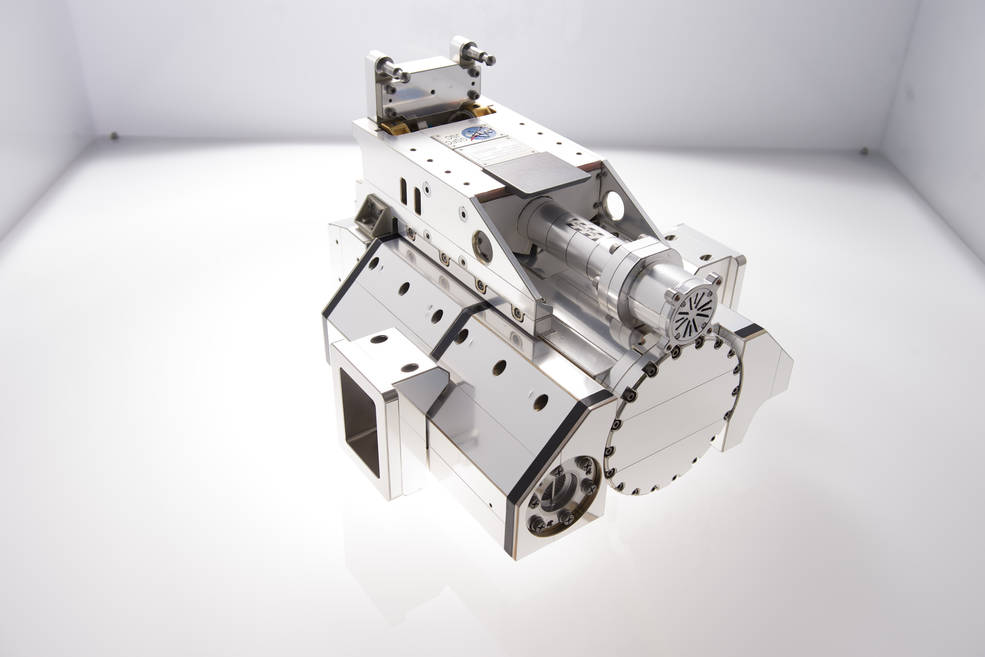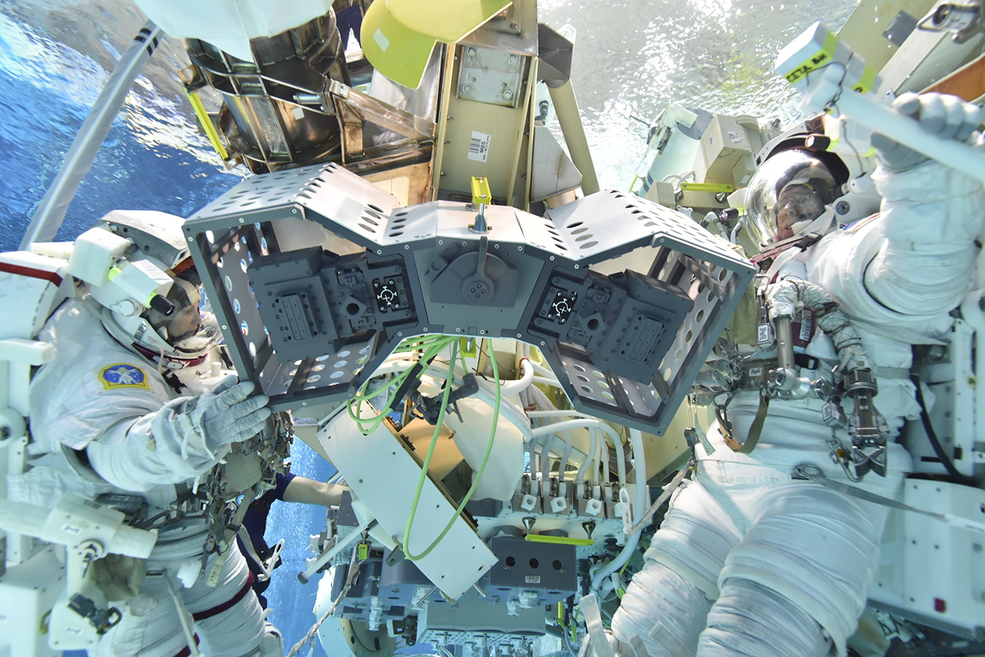No matter where you live, parking’s always at a premium
Even when you have plenty of space, it’s good to have convenient parking.

This week saw the launch of a Space X Dragon robotic cargo freighter from the Kennedy space centre at Cape Canaveral with 2,617 kilograms of supplies, experiments and hardware for the space station and its six-person crew.
Also aboard is a new home for RELL, Robotic External Leak Locator. Spacecraft rely on extensive cooling systems, just as coolant in a car is used to cool the engine, ammonia is circulated through a huge system of pumps, reservoirs and radiators on station to cool its complex life support systems, spacecraft equipment and science experiments. RELL is a “sniffer,” robot that helps mission operators detect the location of external ammonia leaks on space station and rapidly confirm a successful repair.

The RELL design includes two sensors: a mass spectrometer and a total pressure gauge.
The mass spectrometer measures the number of molecules present in any molecular mass to create a “mass spectrum” reading. Based on this data, analysts determine the composition of present gases. The mass spectrometer can distinguish between trace orbital gasses, which occur naturally, and chemicals potentially originating on station, such as ammonia. This tool can tell the difference from a football field length away.
The total pressure gauge measures the total pressure in space. After the general vicinity of a leak is known, the pressure gauge is able to pinpoint any leak to within a few inches in real time.
Keeping RELL inside the station takes up space that could be used for other scientific hardware and experiments. Additionally, the process of deploying RELL takes much longer when the tool is not externally stored. Operated remotely by mission controllers on the ground, RELL currently requires crew schedule and airlock availability to get it outside the station with the use of station’s Dextre Robotic arm.
Once outside the station, RELL currently needs to wait 12 hours in space before it can be used. This allows for RELL’s extremely sensitive gas analyser to clear itself of water vapour and other gases from inside the station, essentially giving the instruments a clean slate. Because of this extensive process, it could take multiple weeks or even months from the time a leak is suspected, to the time RELL is deployed, to then find out where it is coming from. RELL is such a low cost tool, with mostly off the shelf robotic sensing components that NASA are having two and with the new Robotics Tool Stowage, RiTS, this entire process would only depend on Dextre’s availability, greatly expediting the search for leaks.
“For each of its stored tools, RiTS will provide heat and physical protection from radiation and micrometeroids, or tiny, high-speed objects hurtling through space,” said Mark Neuman, RiTS hardware manager. “Its thermal system maintains ideal temperatures for the instruments, helping them stay functional.” Having this housing unit in place will also help the space station’s robotic arm, Dextre, easily locate, grab and put back these important tools.

Human and robotic collaborations like these are considered important for upcoming space exploration plans, including potential exploration of the Moon, Mars and beyond. For example, RiTS and RELL’s capabilities could be employed to detect potential leaks occurring from future human habitats on lunar and other planetary surfaces, as well as the Lunar Gateway.

As with all good robotics installations, this robotic tool and the new stowage mean that the cost of leak detection has been reduced significantly, it is faster, more reliable and is future relevant.
Find out more about the RELL robotic tool and the RiTS robot hotel on the NASA website, and more about the SpaceX resupply mission on the SpaceX website.
Photography credits: NASA
